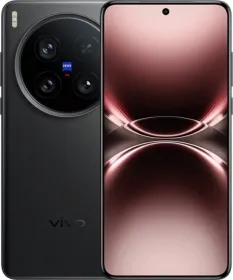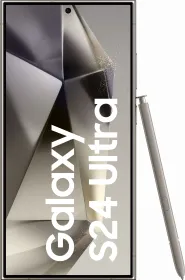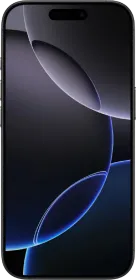vivo marks its 10-year milestone in India with the launch of the X200 Pro, its flagship for 2025. As the successor to the impressive X100 Pro, which wowed users with its stellar photography and reliable performance, the X200 Pro arrives with high expectations. Can it build on the legacy of its predecessor and claim the title of the best camera smartphone? More importantly, does it have what it takes to challenge industry heavyweights like Apple, Samsung, and Google while redefining the flagship experience?
vivo X200 Pro Price & Availability
The vivo X200 Pro starts at ₹94,999 for the 16 GB RAM + 512 GB storage variant. vivo is also offering a ₹10,000 bank discount on select cards. It’s available in two different colors—Cosmos Black and Titanium Grey. You can purchase the device via Amazon, Flipkart, Croma, vivo offline stores, and other retailers.
Pros
- Exceptional camera performance
- Reliable everyday performance
- Good thermals performance
- Excellent battery life with Super fast charging
- Stunning display
- 4 OS + 5 security updates
- Ultrasonic fingerprint scanner
- Excellent speakers
Cons
- Bloatware
- Average Selfie camera performance
vivo X200 Pro Review: Design and Build
The vivo X-series has always had its distinct personality that remains true for the X200 Pro. While it remains true to its roots, isn’t dramatically reimagined the aesthetics but has introduced subtle refinements that elevate its overall appeal. The oversized camera cluster—a hallmark of the X-series—is back, but the branding and the side design feel more refined this time.

Like the X100 Pro, the x200 Pro also features a large camera module with a metallic ring. Unlike the X100 Pro’s crescent-shaped outer ring has been replaced with a circular shape with fine ridges. What else has changed is the arrangement of camera sensors. The X100 Pro’s Vivo X-like formation has been replaced by the X200 Pro opts for a parallel alignment of its three sensors and one decorative element designed to resemble a sensor.

The frame has transitioned from the curved edges of the previous generation to a flat surface with slight curvature at the end, making it both trendy and practical. Thanks to the increased contact area, the X200 Pro feels more secure in hand, making it less slippery. There is not much change in the phone’s dimensions and weight.

Like the X100 Pro, its successor is too slightly top-heavy, making it feel a little heavier than its 223-gram weight. (for reference, the iPhone 16 Pro Max weighs 228 grams). Vivo has also added the IP69 rating (yes, high-temperature water jets) combined with the familiar IP68 sealing sets it apart from many competitors.
Then there’s the finish. The material choices also cater to a variety of preferences. Carbon Black and Titanium Gray with an anti-glare satin finish only come to India, while vivo also offers Moonlight White and Sapphire Blue with a glossy sheen in China. I wish Vivo bought the Sapphire Blue variant in India, which is inspired by ocean ripples; it looks genuinely stunning. Depending on the angle and lighting, the rear panel creates a shimmering effect that feels both premium and dynamic. However, we received the Titanium Gray variant, which is not as flashy, but looks elegant and is not a magnet for fingerprints.

On the practical side, the X200 Pro introduces an ultrasonic fingerprint reader, an upgrade over last year’s optical sensor. It’s faster and more reliable, especially in less-than-ideal conditions.
Ultimately, the vivo X200 Pro doesn’t reinvent the wheel but perfects and refines its tried and tested design formula.
vivo X200 Pro Review: Display
The vivo X200 Pro houses a 6.78-inch LTPO AMOLED display with 452 pixels-per-inch (PPI) and a cinematic 20:9 aspect ratio. What stands out right away are the bezels, or rather, the lack thereof. vivo has trimmed them down even further compared to last year’s X100 Pro. It’s right up there among the best OLED panels in the market, offering sharp visuals in 1.5K resolution.

The X200 Pro supports an adaptive refresh rate, adjusting the screen refresh rate dynamically based on what’s played on it. If you are watching a 24fps movie, the System will adjust the display refresh rate to 24Hz for seamless playback while conserving battery. And if you are doing gaming, the phone will automatically ramp up the refresh rate to 120Hz for silky-smooth action. This thoughtful approach isn’t just cool—it’s practical, saving battery life. There’s also Adaptive Ambient Color Temperature, Anti-Fatigue Brightness Adjustment 2.0, and 2160Hz PWM dimming (a higher number means less screen flicker).

Speaking of energy efficiency, vivo has made some clever tweaks this year, with the X200 Pro’s panel being more power-friendly than its predecessor. And when it comes to brightness, this display delivers. With a peak brightness around of 2000 nits, sunlight readability is excellent—you won’t be squinting to check notifications outdoors.

Color reproduction is another strong suit. The X200 Pro supports the P3 color gamut, Dolby Vision, and HDR10+, ensuring vibrant and true-to-life visuals whether you’re streaming movies or scrolling through your photo library. Netflix in Full HD? Check, thanks to Widevine L1 certification. YouTube HDR content? Absolutely. Even Android Ultra HDR photos look stunning, making this display a real treat for content creators and enthusiasts alike.
The vivo X200 Pro’s display doesn’t just impress; it is one of the best you can buy in its segment.
vivo X200 Pro Review: Speakers and Haptics

The Vivo X200 Pro packs a dual stereo speaker setup, with one speaker at the top and another at the bottom. Together, they deliver a well-balanced sound profile with a decent frequency range. The bass is present—not overwhelming, but enough to be noticeable during your gaming, movie, and binge-watching sessions. When it comes to haptics, the vivo X200 Pro offers good tactile feedback that’s well-synced with actions like pressing the fingerprint scanner, swiping from the side, using Circle to Search, and more.
vivo X200 Pro Review: Software
Out of the box, the vivo X200 Pro ships with Funtouch OS 15, Vivo’s latest software built on Android 15. Unlike many other recent smartphones, Vivo’s flagship stands out by ensuring it launches with the newest Android version. Even better, the X200 Pro promises four years of Android OS updates and five years of security patches — a first for Vivo and a significant step forward for long-term software support.

Beyond Vivo’s own app ecosystem, the X200 Pro does come preloaded with third-party apps such as Snapchat, Myntra, LinkedIn, Netflix, and Facebook. Thankfully, these can be uninstalled if they’re not to your liking, leaving room for a more tailored experience.
Funtouch OS 15 interface feels fluid, app launches are noticeably faster, and animations are smoother than before. Vivo has also improved customization options, allowing users to tweak icon styles, shapes, and sizes or personalize the lock and home screens. vivo now offers its dedicated data protection chip – Guardian Privacy Protection Matrix, which seems to position itself as Vivo’s answer to Samsung Knox, promising enhanced data security.

AI has been the season’s theme, so vivo doesn’t want to be left behind. The X200 Pro has features like AI Note Assist, AI-enhanced signal boost, AI screen translation, AI transcript assist, vivo Live Call Translation, and Circle to Search, adding a layer of smart functionality.

AI Note Assist and AI Screen Translation performed as advertised, though there’s room for refinement in their execution. The Albums app, Vivo’s default gallery, also benefits from AI with tools like AI Photo Enhance and AI Erase, which proved effective for quick post-shot edits during the review.
Overall, Funtouch OS 15 brings meaningful upgrades that make the Vivo X200 Pro’s software experience a pleasure, though some AI features could benefit from further polishing.
ALSO READ: 15+ Changes in Funtouch OS 15 Nobody’s Talking About
vivo X200 Pro Review: Performance
The Vivo X200 Pro, powered by MediaTek’s Dimensity 9400 CPU, retains the all-big-core design of its predecessor. However, these cores now reside on a 3nm TSMC process node. The configuration includes one super performance core at 3.63 GHz, three prime cores at 3.3 GHz, and four performance cores at 2.4 GHz – a significant upgrade from the Dimensity 9300. It also boasts a new integrated Immortalis G925 12-core GPU clocked at 1.612 GHz, delivering a 41% performance boost over the previous generation. This new chip is paired with up to 16GB of LPDDR5x RAM and 512GB of UFS 4.0 storage.

Benchmark results show a considerable improvement over the previous Dimensity chipset but fall short of Qualcomm’s Snapdragon 8 Elite in most benchmarks, except for 3DMark Solar Bay, where MediaTek takes the lead in ray tracing performance.
The X200 Pro has several gaming features, including a boost performance mode. The X200 Pro supports high and ultra-high quality super-resolution and Ultra-high resolution. The high-quality super resolution provides a noticeable improvement in select games like Genshin Impact and Call of Duty Mobile.






It also supports frame interpolation for games, which can boost FPS in supported games like Genshin Impact. However, it’s less effective than the native interpolation in the Snapdragon 8 Elite-powered iQOO 13.
Vivo uses a vapor chamber cooling system in the X200 Pro that results in lower temperatures than phones with older chips and even the new Qualcomm chip. They also share features like IR blasters, Bluetooth 5.4, NFC, Wi-Fi 7, dual SIM 5G with eSIM support, flagship-level vibration motors, and dual speakers. However, only the X200 Pro has a USB 3.2 Type-C port, while the X200 is limited to USB 2.0. Neither supports charge bypass.
In Genshin Impact, with maximum graphics and FPS settings, the X200 Pro averaged 60 FPS using high-quality super-resolution. Similarly, Call of Duty Mobile achieves a maximum of 120 FPS. The more demanding Call of Duty Warzone Mobile performs slightly better, averaging 111 FPS. Lastly, in Withering Waves, the phone averaged 59.4 FPS.
vivo x200 Pro Review: Cameras
The vivo X200 Pro builds on the success of last year’s X100 Pro, which impressed most of us with its robust hardware and stable performance. Where it fell short earlier this year was in its video capabilities. vivo’s camera development team has made significant strides, addressing shortcomings like videos while doubling down on its strengths.

From an impressive new telephoto lens to a serious push into professional-grade video recording, the X200 Pro positions itself as a major player in smartphone imaging.
For me, the standout feature of the X200 Pro’s camera setup is its 200MP telephoto lens with a 1/1.4-inch sensor. It produces portraits with remarkable details. The lens excels at dynamic range, maintaining clarity in shadows and highlights, and its cropping flexibility stands out. It clearly beats iPhone 16 Pro in 5x native optical zoom, delivering images with less noise and richer details.

However, the limits of digital cropping become apparent at extreme zoom levels. While 10x zoom remains practical with relatively clean results, the promised 100x zoom is more of a novelty than a functional feature, and it is more suitable for casual use than serious photography.
The main camera has a 1/1.28-inch sensor—a step down from last year’s 1-inch module—but compensates with a wider f/1.57 aperture for better low-light performance. Night photography benefits significantly, with brighter images that retain detail. Still, reducing sensor size raises questions about vivo’s strategy, possibly linked to the increased focus on the telephoto lens. While image quality hasn’t noticeably declined, enthusiasts may wonder why vivo didn’t retain—or expand—last year’s sensor size.



















The ultra-wide camera remains largely unchanged, with a 15mm focal length, slightly narrower than Apple’s 13mm counterpart. This difference is particularly noticeable in the video, where cropping magnifies the gap. While the ultra-wide lens delivers solid performance for close-up and macro shots, it doesn’t feel like a major upgrade. In vivo’s inclusion of a telephoto macro mode offers a creative edge, providing compressed, cinematic close-ups that are more compelling than traditional ultra-wide macro images.
Despite the advancements, vivo misses the mark in some areas. The lack of on-device photo style adjustments, a feature Apple excels at, is a noticeable omission. Vivo’s native color tuning is strong, but the inability to tweak settings like contrast and saturation in real time limits creative control.
Additionally, the ultra-wide lens, while competent, hasn’t seen the same level of innovation as the telephoto module.
vivo has done well to offer the 10-bit Log option in the X200 Pro, marking a serious attempt to cater to professional videographers. Unlike many Android phones that mimic Log profiles with flat desaturation, vivo’s implementation offers real dynamic range and flexibility for post-production.
The phone supports 4K/120p recording across all focal lengths, surpassing the iPhone 16 Pro, which limits this feature to its main camera. This versatility allows for dynamic slow-motion footage with dramatic depth, particularly using the telephoto lens. However, low-light video performance reveals some noise in shadows.
vivo X200 Pro Review: Battery Life and Charging
The smartphone industry has started moving towards new-age semi-solid-state batteries, which use silicon-carbon anodes that replace graphite anodes to achieve better density, resulting in larger batteries with better longevity in extreme weather conditions. The X200 Pro is among India’s first phones to pack new-age batteries. It packs a 6000mAh semi-solid, which can retain charge even in temperatures minus 20 degrees.
In our PCMark battery test, it lasted for 14 hours and 21 minutes. During gaming, we register a drop of about 13 percent in an hour while playing graphic-intensive games. The phone supports 90W FlashCharge and 30W wireless charging. It took us about 25 minutes to completely refill the vivo X200 Pro battery from a dead state.
Review Verdict: Should You Buy the vivo x200 Pro?
The vivo X200 Pro cements vivo’s place at the top of the smartphone camera game. Building on the success of the X100 Pro, this device brings a more refined design, an upgraded MediaTek chipset paired with vivo’s V3 imaging chip, and an impeccable focus on delivering flagship performance. Its IP69-rated durability, stellar battery life, and blazing-fast charging only sweeten the deal.
But where the X200 Pro truly shines is in its camera system. In its 10th year in India, Vivo has delivered a photography powerhouse that doesn’t just rival but challenges the very best from Apple, Samsung, and Google. Whether it’s night photography, portraits, or landscapes, the X200 Pro consistently delivers results that make it the camera smartphone to beat in India.
Of course, no phone is perfect. The selfie camera feels lackluster compared to the rest of the imaging setup, and the software, while much improved, still carries some bloatware (albeit free of intrusive ads).
That said, Vivo’s X200 Pro strikes an excellent balance of performance, design, and value. If you’re looking for alternatives, the Oppo Find X8 Pro offers competitive camera capabilities but falls just short of the X200 Pro. For those with deeper pockets, premium options like the iPhone 16 Pro Max, Galaxy S24 Ultra, and Pixel 9 Pro XL remain worthy competitors, but at a significantly higher price point.
Overall, the X200 Pro is not just another great phone—it’s the phone for photography enthusiasts in India today.
Smartprix ⭐ Rating: 8.8/10
- Display: 9/10
- Design and Build: 9/10
- Software: 8/10
- Speakers & Haptics: 8.6/10
- Biometrics: 9/10
- Performance: 9/10
- Cameras: 9/10
- Battery Life & Charging: 8.7/10
First reviewed in December 2024.
Note: This post contains affiliate links. We may earn a small commission at no extra cost to you. We only recommend trusted products.



































